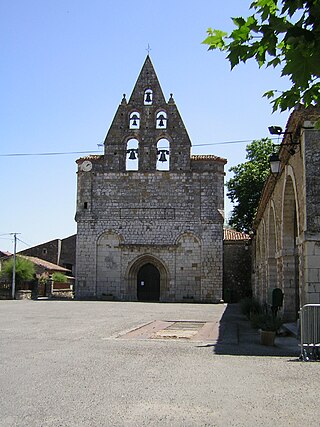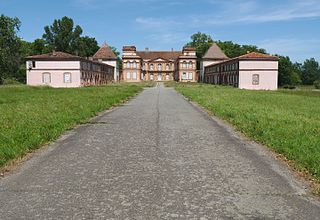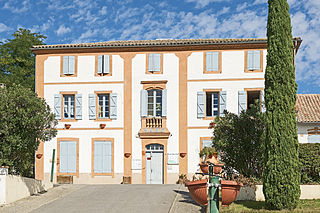
Dordogne is a large rural department in south west France, with its prefecture in Périgueux. Located in the Nouvelle-Aquitaine region roughly half-way between the Loire Valley and the Pyrenees, it is named after the river Dordogne, which runs through it. It corresponds roughly to the ancient county of Périgord. In January 2023, Dordogne had a population of 412,807.

Tarn-et-Garonne is a department in the Occitania region in Southern France. It is traversed by the rivers Tarn and Garonne, from which it takes its name. The area was originally part of the former provinces of Quercy and Languedoc. The department was created in 1808 under Napoleon, with territory taken from the neighbouring Lot, Haute-Garonne, Lot-et-Garonne, Gers and Aveyron departments.

Haute-Garonne is a department in the Occitanie region of Southwestern France. Named after the river Garonne, which flows through the department. Its prefecture and main city is Toulouse, the country's fourth-largest. In 2019, it had a population of 1,400,039.

Muret is a commune in the Haute-Garonne department, of which it is a subprefecture, in the Occitanie region of southwestern France. Its inhabitants are called Muretains.

Pibrac is a commune in the Haute-Garonne department in southwestern France, located 15 km (9.3 mi) west of Toulouse.

Castagnac is a commune in the Haute-Garonne department in southwestern France.

Trets is a commune in the Bouches-du-Rhône department of the Provence-Alpes-Côtes d’Azur region in the southeast of France. With a population of over 10,000, it is one of 44 communes in the Aix-en-Provence arrondissement or district. It is often described as a medieval town because of its development during the Middle Ages of European history and retention of medieval architecture.

Beynac-et-Cazenac is a village located in the Dordogne department in southwestern France.

Longages is a large village and commune in the Haute-Garonne department in southwestern France. It is best known for the castle which dominates the village.

Saint-Élix-le-Château is a village and commune in the Haute-Garonne department in southwestern France. It is best known for the castle which dominates the village.
Saint-Élix-Séglan is a small rural village and commune in the Haute-Garonne department in southwestern France. It is best known for the castle which dominates the village.

Fourquevaux is a commune in the Haute-Garonne department in southwestern France.

Alan is a commune in the Haute-Garonne department in southwestern France.

Barbazan is a commune in the Haute-Garonne department in the Occitanie region of south-western France.

Pinsaguel is a commune in the Haute-Garonne department in southwestern France.

Saint-Jory is a commune in the Haute-Garonne department in southwestern France. It is served by Saint-Jory station on the Bordeaux-Toulouse line.

Brax is a commune in the Haute-Garonne department in the Occitanie region.

Calmont is a commune in the Haute-Garonne department in southwestern France.

Montricoux is a commune in the Tarn-et-Garonne department in the Occitanie region in southern France. It is located along the banks of the Aveyron, between Nègrepelisse and Bruniquel. The written history of the commune dates back to the eighth century. The Château de Montricoux, built by the Knights Templar, now houses the Marcel-Lenoir Museum, which preserves 130 drawings, pastels, watercolors, oils, and frescoes by this artist, a resident of the town.

Pompignan is a commune in the Tarn-et-Garonne department in the Occitania region in Southern France.























